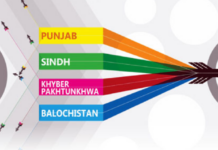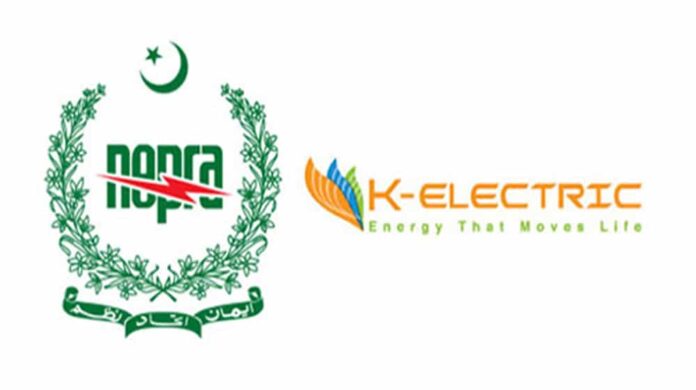ISLAMABAD: The Government of Pakistan has filed a formal review petition before the National Electric Power Regulatory Authority (NEPRA), seeking a revision of the recently approved multi-year tariff (MYT) determinations for K-Electric (KE) for the fiscal years 2024–25 through 2029–30.
The move comes amid serious concerns from the Power Division that NEPRA’s determinations grant K-Electric financial advantages not extended to other power utilities in the country—leading to inflated electricity bills for Karachi consumers and an unjustified fiscal burden on the federal budget.
Soon after the filing, Federal Minister for Power Awais Leghari took to social media, stating that Pakistan’s power sector cannot afford to encourage inefficiency, whether from public or private entities. “The power sector cannot bear generous increases in the tariff structure just to cover up inefficiency,” he tweeted, adding that the government’s review motion is both responsible and necessary to promote a sustainable and fair electricity distribution system.
At the core of the government’s case is the claim that NEPRA’s decision permits KE to recover more than its actual costs, through mechanisms such as inflated fuel cost benchmarks, excessive return on equity, and special allowances that are not granted to any other distribution company (Disco) in Pakistan. The cumulative financial impact of these deviations is estimated to exceed Rs 300 billion over the multi-year control period.
The review petition points out that NEPRA approved a fuel cost benchmark of Rs 15.99 per unit for KE, which is substantially higher than what other utilities pay for power purchased from the national grid. This single measure is expected to transfer about Rs 41 billion in FY 2024 and FY 2025 from consumers or the federal treasury to KE.
Additionally, KE has been allowed to include “recovery losses” in its tariff, even though its own records show it performs better than the level NEPRA assumed. No other utility in the country receives such an allowance. This policy is projected to increase KE’s revenues by Rs 36 billion in FY 2024 and Rs 35 billion in FY 2025 alone, with an estimated cumulative impact of over Rs 200 billion through 2030.
The government is also challenging NEPRA’s decision to permit KE a 24 percent markup on working capital—substantially higher than both KE’s previous allowance and what other utilities receive. This is projected to add Rs 15 billion to KE’s revenues over the seven-year period.
Moreover, NEPRA has allowed KE to pass on distribution losses of 13.90 percent, even though KE itself had forecast a loss of 13.46 percent. This added leeway translates into another Rs 21 billion over the control period, while reducing KE’s incentive to improve efficiency. An additional concern is the approval of a special 2 percent “law and order” margin exclusively for KE to offset security-related costs in Karachi. The federal government argues that security conditions in the city have significantly improved and that no other utility in volatile areas receives such treatment. This provision alone could add Rs 14 billion to KE’s revenue in FY 2024 and up to Rs 99 billion by 2030.
The petition further criticizes NEPRA’s decision to allow KE to retain earnings from fines on contractors, bank interest, and profits from auxiliary businesses. These earnings are generated using infrastructure and assets funded by consumers, and the government contends they should reduce the tariff rather than boost KE’s bottom line.
On the transmission side, NEPRA set KE’s transmission loss target at 1.30 percent, even though its historical losses are closer to 0.75 percent. Compounding this is a skewed benefit-sharing mechanism: KE keeps 75 percent of any cost savings from better performance, while passing only 25 percent to consumers. This practice discourages operational efficiency and adds about Rs 28 billion in costs over the tariff period.
Return on equity (RoE) is another area where KE has been treated more favorably than its peers. KE’s transmission business has been granted a RoE of 12 percent in U.S. dollar terms—equivalent to approximately 24.46 percent in rupee terms—while other national utilities like NTDC receive only 15 percent in rupees. KE’s distribution arm has been allowed an even higher RoE of 14 percent in dollars, or 29.68 percent in rupees, compared to FESCO’s 14.47 percent in rupees. These two policies are estimated to increase KE’s revenues by Rs 72.6 billion through 2030.
In the generation segment, the government is contesting NEPRA’s approval of capacity payments to idle KE power plants such as BQPS-I, KCCP, KGTPS, and SGTPS, which are expected to contribute minimal or no electricity due to increased reliance on cheaper grid-supplied power. These “take-or-pay” commitments are expected to cost Rs 12.7 billion in FY 2025 and about Rs 82.5 billion over the full period. Further, KE’s generation assets are allowed full inflation indexation and a return of 17 percent—higher than the industry norm—adding another Rs 57.3 billion to consumer costs.
The Power Division argues that these privileges create a regulatory imbalance between KE and other utilities, effectively establishing a “two-tier” power sector that undermines transparency and discourages operational discipline. It asserts that all utilities must be held to the same standards, and that tariffs should reflect only actual, verifiable costs and fair returns—without hidden cushions for inefficiencies or special profit margins.
The government has formally requested that NEPRA revisit key assumptions, performance benchmarks, and allowed margins in its MYT determination for KE, aligning them with prevailing standards for other utilities. The goal, it insists, is not only fiscal prudence but also regulatory fairness and consumer protection.























